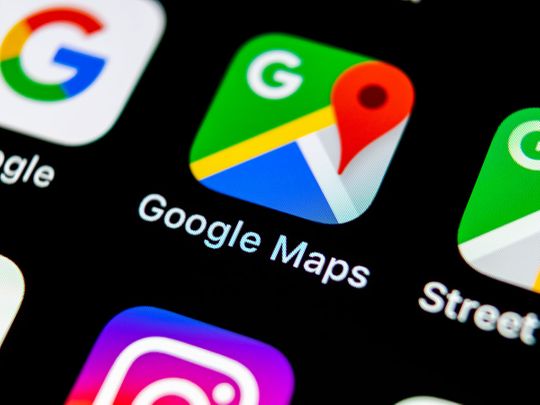
IPhone users who want to avoid the police can now hit up Google Maps before they hit the gas.
Google is rolling out the ability to report speed traps, crashes and slowdowns in real time to its Maps iOS app, making the new feature available to about 1 billion existing users worldwide. It was already available on Android phones, as well as on Google's other map app, Waze, which has a fraction of the users.
But U.S. law enforcement has been critical of using this type of technology to report checkpoints to identify those under the influence of alcohol or drugs, and other types of police presence, something they say heightens safety risks on the road.
"Revealing the location of checkpoints puts those drivers, their passengers, and the general public at risk," wrote the New York Police Department in a letter to Google in February, demanding that Waze stop alerting users to those locations.
It's the latest wrinkle in the sometimes rocky relationship between law enforcement and tech companies in recent years. Most giant tech firms tout a mixture of free speech, privacy and ease of use as pillars of their services and devices, values that don't always align with helping the police crack a case.
Amazon initially fought law enforcement on subpoenaing recordings from one of its Echo speakers that may have been witness to a murder, but eventually turned them over. The FBI cracked a San Bernardino terrorist's phone with help from professional hackers after Apple declined to help. And the United States, Britain and Australia have all called on Facebook to halt its plans to encrypt its messaging apps, unless it provides a way for investigators to see communications.
Google said in an emailed response to questions about Google Maps that safety is "a top priority" and that reporting features can be beneficial to public safety. "We believe that informing drivers about upcoming speed traps allows them to be more careful and make safer decisions when they're on the road," said Google spokeswoman Genevieve Park.
NYPD spokeswoman Sgt. Mary Frances O'Donnell said in a statement Monday that "the Department has engaged in productive discussions with Google to make information available to drivers that will make roads safer and encourage responsible driving, while not impeding the enforcement of New York State Vehicle and Traffic laws."
There have previously been lower-tech options for reporting DUI or DWI checkpoints and speed traps. German radio stations alert drivers to the locations of speed traps on the Autobahn. Drivers sometimes flash their headlights to oncoming traffic to warn others of police in the area. On social media, users sometimes note recent checkpoint locations on Nextdoor, Twitter and other platforms.
An Ohio man was arrested in 2014 for holding up a sign that said, "Check point ahead! Turn now!," according to a CBS News report. He was eventually cleared of the charges against him.
There are also several apps aimed specifically at documenting police presence, including sobriety checkpoints.
Google Maps is also adding other categories of incidents that can be reported by iPhone and Android users: objects in the road, lane closures, construction and disabled vehicles. While the app has an option to report "speed traps," it does not have one for sobriety checkpoints or a means to comment within the reporting feature. Waze allows users to report "police" and "camera," and to create comments that explain whether the incident is a checkpoint or another type of law enforcement activity.
But map apps have transformed communities in more than one way, as they frequently route cars around traffic and onto unexpected roads - sometimes making traffic worse in other areas.
In one example, a quiet Maryland street suddenly became inundated with several hundred cars an hour after Waze routed vehicles there. The situation led an exasperated homeowner to submit false reports of a blockage on the street in an attempt to trick the algorithm. He was unsuccessful.
According to mobile data and analytics firm App Annie, Google Maps had more than 177 million smartphone monthly active users, and Apple Maps had nearly 74 million smartphone monthly active users in the United States last month.
But Apple Maps could have a chance to catch up as it moves to make improvements. Apple plans this year and next to roll out updates including more detailed graphics and better pedestrian information. Apple said in a news release that the updates came after the company drove "4 million miles to rebuild the basemap from the ground up."
Apple Maps suffered an embarrassing debut in 2012 that involved bloopers including missing transit information and a misplaced Washington Monument.











